Triumph has been working hard over the past five years to earn its slice of the lucrative over-1000cc adventure bike market, yet despite this, the Tiger Explorer 1200 still wouldn’t be the first bike that comes to mind for most people thinking about serious off-road adventure riding. The 2016 Explorer comes with the promise of highly improved all-terrain capabilities, and is aimed at tackling the competition head on – both on the road and off it. Perhaps bravely, Triumph Australia organised three days of rugged outback adventure riding on Cape York Peninsula to prove that the sales brochure isn’t just hype. Here’s my impressions of how well the bike matched the marketing spiel.
They say:
The new Tiger Explorer family has been conceived, designed and built to deliver the ultimate transcontinental adventure motorcycle for every rider.
Youngy says:
Crossing continents involves tackling many different environments, road surfaces and conditions, depending on where in the world you ride. Across the Explorer 1200 range you can choose from the tarmac-biased end of the spectrum covered by the three cast-wheeled XR models, through to the off-road ready XC spoked wheel variants.
I rode on the top-spec XCA on the Australian launch, and this is the model which most accurately reflects the all-roads requirements of a true transcontinental adventure bike.
The most impressive result of the many changes the Explorer has received for 2016 is that the off-road end of the spectrum has indeed been greatly extended, as the XC models have become significantly more capable on rough roads and in harsh environments.
I can’t say I agree that the Explorer is the ultimate choice for “every rider”, as smaller, lighter, less powerful adventure bikes such as the Tiger 800 are certainly a better choice for many, if not most, riders wanting to take their adventures off road. But, for those looking for a big motorcycle to drive their big adventure ambitions, Triumph now has a contender which is truly capable of hitting the rough stuff straight from the showroom floor.
Perhaps most importantly for a long-haul tourer, the Explorer was one of the most comfortable machines I’ve ever spent extended time aboard. I found it a phenomenally low-fatigue motorcycle to ride both sitting and when stood on the footpegs for long periods off road.
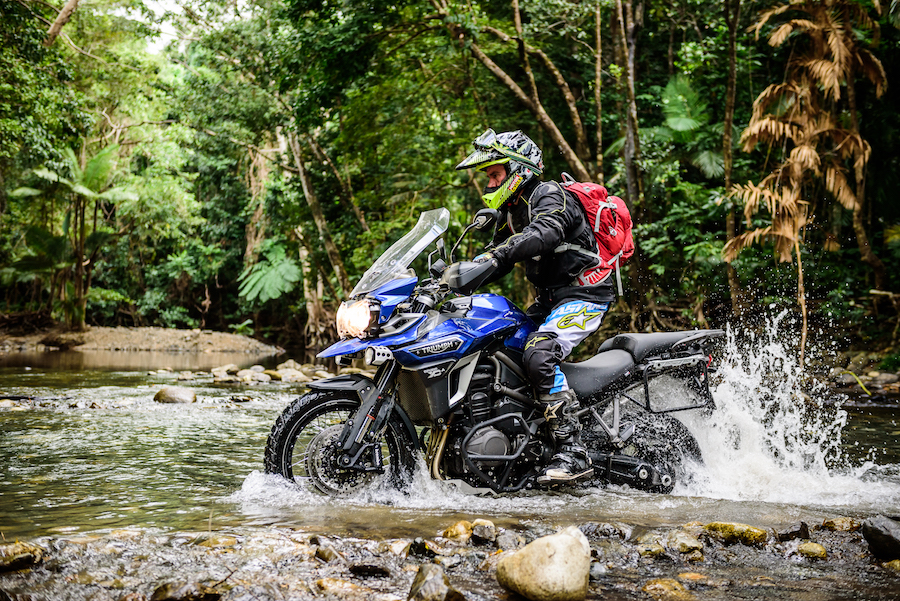
They say:
More power and torque combined with state of the art rider-focused technology delivering more capability in a range offering more choice than ever. The Tiger Explorer simply oozes adventure. This is the only bike in the large adventure sector to feature the benefits of a triple engine.
Youngy says:
Oozing adventure? For me, the perceived benefits of an in-line three-cylinder engine weigh more towards road riding than off-road use, and this is something Triumph has addressed with the new Explorer. More power without also delivering the ability to control it is the last thing you need off-road, but Triumph has managed to deliver more power and torque, while simultaneously giving the rider better control over it compared to the previous model. This includes the ability to choose the full raw and sporty three-cylinder power for exuberant road use, or tame it with electronics for a far more off-road friendly power delivery, plus various levels in between these two extremes.
Another potential benefit of the Triumph over its exclusively twin-cylinder rivals is that when more cylinders are used to achieve the same engine capacity it generally means less stress on key engine components, given an equal power output and engine rpm. Of course this is also dependent on other things being equal, such as quality of manufacturing, but Triumph is a match for any brand in this area.

They say:
Triumph Semi Active Suspension (TSAS) optimises rider and passenger comfort, boosts the bikes’ versatility depending on riding style and conditions, and provides excellent stability benefitting handling and safety. Controlling the electrically adjustable WP forks and the semi-active WP mono-shock, information is fed from the IMU ensuring TSAS responds to data being fed through regarding the bike’s position and road conditions.
Youngy says:
For me, the TSAS equipped WP suspension is the single most important update for the Explorer XC range. Where the previous model suffered greatly was a lack of support and damping, particularly at the front end, which is crucial when taking a 250kg-plus motorcycle on rough and technical terrain. Manoeuvres and obstacles that would have caused the previous Explorer to blow through its fork travel and nosedive or plough the front heavily, can now be tackled with a substantially improved level of control and confidence.
This semi-active system can be set permanently in off-road mode or in Auto. In Auto, TSAS detects changes from road to off-road conditions and switches between damping settings automatically. Each of the five riding modes (on the XCA) have an appropriate default damping setting, but these can also be adjusted to suit individual rider preferences with nine settings available from Sport (hard) to Comfort (soft). The default rider modes work well for their intended purpose, but experimenting with the settings to develop an understanding of the TSAS system’s scope can unlock even greater potential capabilities and comfort from the Explorer.
The only addition I would make to the Explorer chassis for my own personal set-up is a steering damper, and I do wonder why Triumph omitted this from the bike’s kaleidoscope of features. The Explorer is generally a surefooted motorcycle, but on a couple of occasions I experienced sudden kickback through the front end – something which instantly reminded me of the Explorer’s fairly extreme steering head angle of 23.1°, a full degree steeper than the previous model. Admittedly this happened at very high speed on a badly corrugated and pot-holed gravel road, and the bike’s propensity to do this will depend on rider, load, terrain, speed and suspension setting. But, then again, a good steering damper is always cheap insurance in my opinion, and would top off an otherwise excellent chassis package.
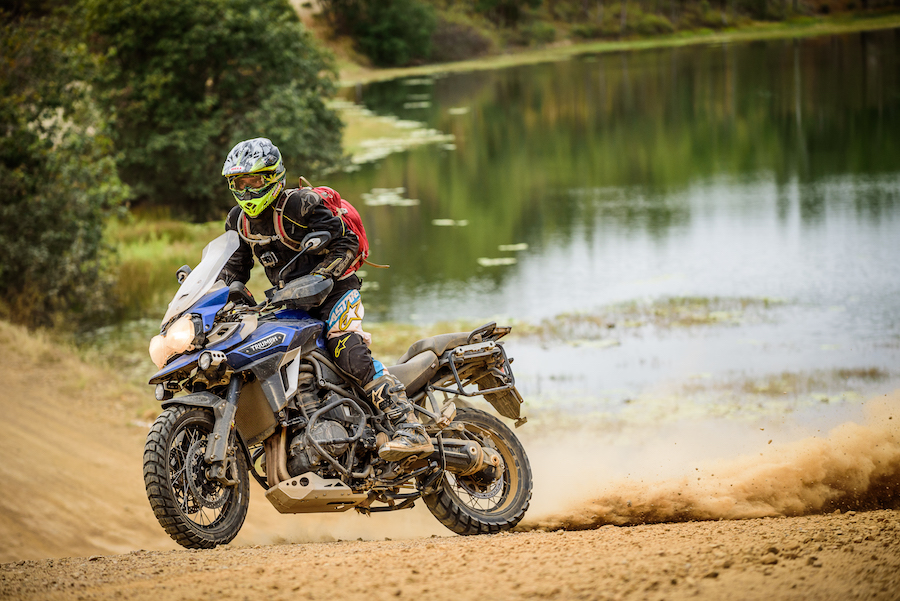
They say:
The Tiger Explorer retains the core styling elements from the previous model, evolving the taut, crisp lines to a higher level of modern beauty and proportioned muscularity. The perfect balance of style and practicality.
Youngy says:
The Explorer is certainly a handsome and muscular beast, and the styling changes to the front end give it a more integrated and purposeful look. Compared to the previous model, the new cockpit and screen design works extremely well at reducing buffeting, increasing the area of rider protection, and also diverting hot air away from the rider. The XCA comes standard with a high touring screen, and I found the lowest position preferable most of the time for my 173cm height. On the few occasions I used it, the electric screen was quick and easy to adjust at any speed. Although, I would have preferred a stand-alone screen switch (as cruise control has), rather than needing to select screen in the menu each time you want to adjust it.

They say:
Optimised Cornering ABS and Traction Control uses the Inertial Measurement Unit (IMU) system developed by Continental. The IMU sensor cluster measures the motorcycle’s movement status (pitch rate, yaw rate, roll rate, vertical acceleration, lateral acceleration and longitudinal acceleration). The system calculates the lean angle to ensure greater stability to the rider, optimising performance of the ABS and Traction Control.
Youngy says:
The addition of an IMU to its electronic systems brings the Explorer in line with even its more expensive competitors in the premium adventure bike market. The sophistication and complexity of these flagship adventure models makes this sector one of the toughest and most developmentally intensive markets to compete in, but Triumph is taking on all comers in the technology arena.
ABS performance was excellent in all riding modes and across all surfaces and riding conditions. I never felt tempted to disable the ABS, which for me is a sure sign of its good operation. The new Brembo brakes give all the stopping power required for a fully fuelled and heavily loaded two-up touring bike of this power and weight, and their performance never faded through the dust, mud, sand and water we encountered over the three day test ride.
The Explorer’s traction control system worked well on the road and with high to medium grip levels off road. Extremely low grip surfaces such as river crossings and steep climbs on loose gravel was where I found the system’s limitations, and in these situations TC needed to be disabled in order to keep momentum. I found that selecting the Rain riding mode with TC disabled was the best way to tackle ultra-low grip situations. This combination also worked brilliantly for general gravel road riding, and the Explorer provided big fun for controlled high-speed drifting on the sort of gravelly back roads which are the backbone of Aussie adventure riding.

They say:
A key aspect of the large capacity adventure motorcycle segment is the technology used to help the rider stay in the saddle for longer, with a choice of set ups to help them cope with a range of surface and weather conditions.
Youngy says:
The top-spec XCA model I rode was blessed with every option. Triumph’s Hill Hold worked seamlessly and is a great feature for a bike designed to be loaded to the hilt.
Cruise control is a no-brainer for a luxury tourer, and the Triumph’s is one of the best in the business. Deviation from the set speed is kept to an absolute minimum on climbs and descents, speed trimming is easy on the big control buttons, and the cruise speed is displayed permanently and prominently on the dash – something all CC systems should feature.
The list of ancillary items which come as standard on the XCA is truly impressive, and makes it the stand-out model for value as well as specification and overall capabilities: crash bars, centrestand, sump guard, fog lights, hand guards, pannier rails, three power points including a USB port, tyre pressure monitor, CNC off-road footrests, heated grips and seats, radiator guard, immobiliser – just add some panniers and go get lost!
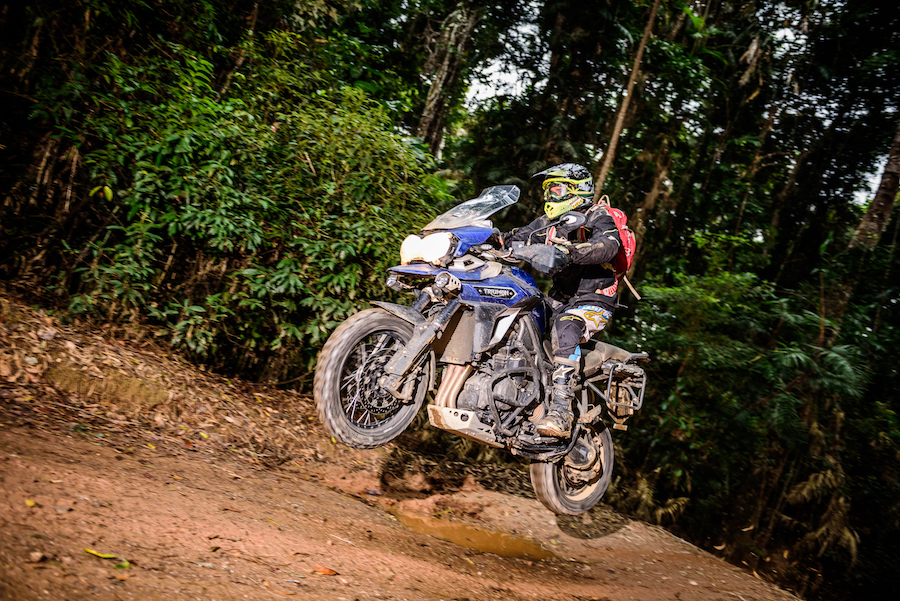
Summary:
This 2016 model is the first big leap forward since the Explorer’s debut, and Triumph Australia’s brave decision to launch the bike in the extreme environments of Far North Queensland proved to be an appropriate display of just how far the model’s all-terrain long-haul credentials have come on since 2012. It certainly is now a Triumph of transcontinental adventure travel.
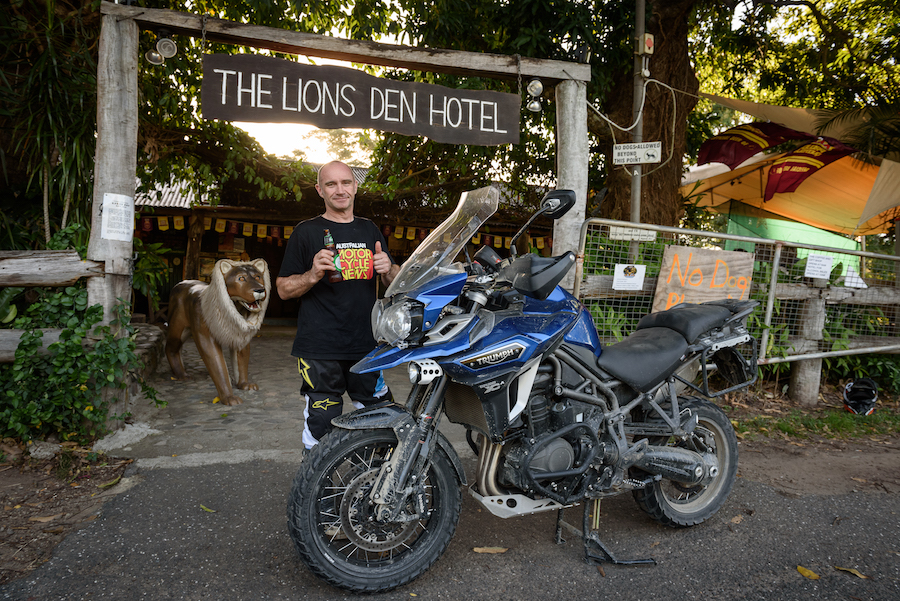
For the full test report check out Australian Motorcycle News Vol 66 No 05, on sale 1 September.
Triumph Tiger Explorer 2016 model prices (+ORC)
XRX $22,700
XRT $25,200
XCX $24,200 (also available in low seat version)
XCA $26,700
Location – Far North Queensland
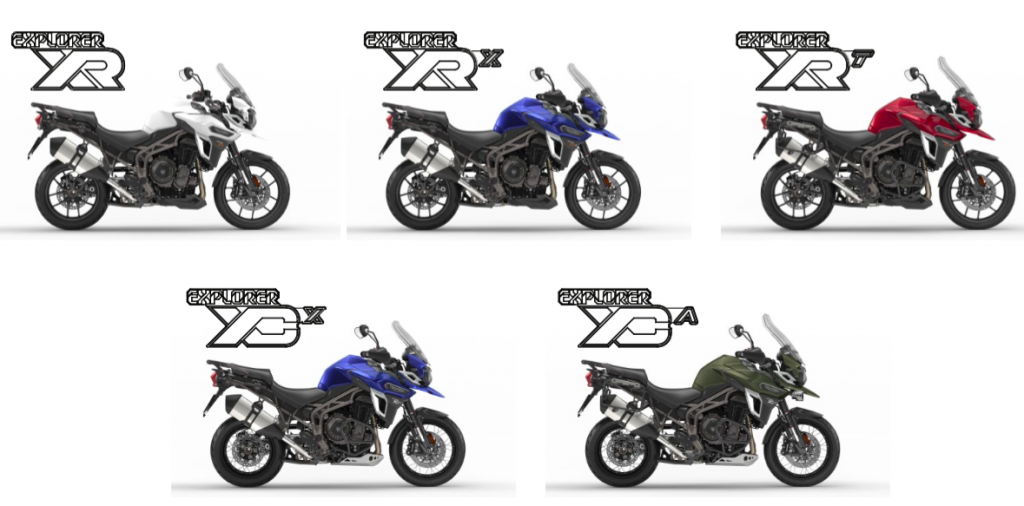
Words: Paul Young Photography: Danny Wilkinson